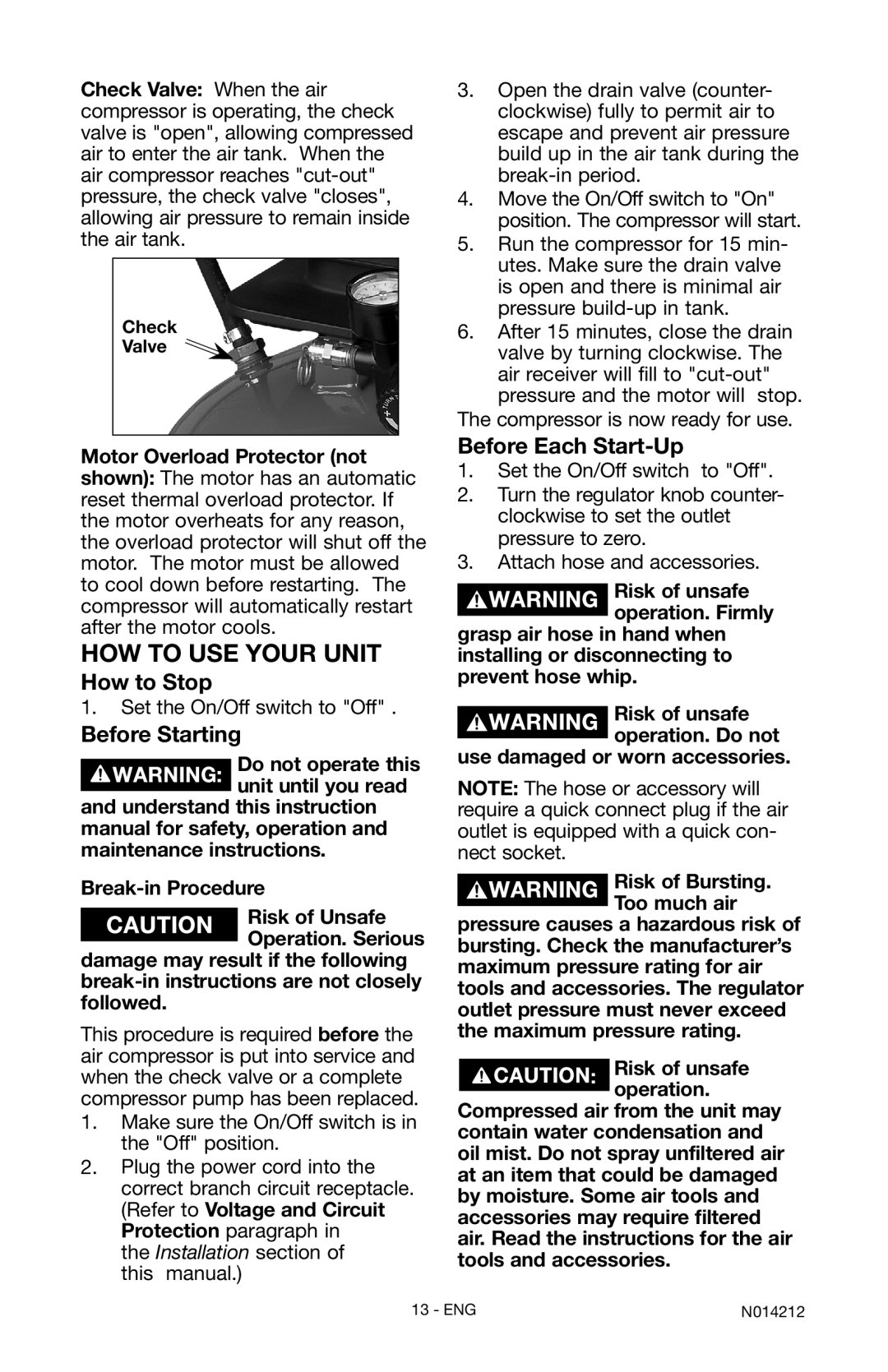
Check Valve: When the air compressor is operating, the check valve is "open", allowing compressed air to enter the air tank. When the air compressor reaches
Check
Valve
Motor Overload Protector (not shown): The motor has an automatic reset thermal overload protector. If the motor overheats for any reason, the overload protector will shut off the motor. The motor must be allowed to cool down before restarting. The compressor will automatically restart after the motor cools.
How to Use Your Unit
How to Stop
1.Set the On/Off switch to "Off" .
Before Starting
Do not operate this unit until you read
and understand this instruction manual for safety, operation and maintenance instructions.
Risk of Unsafe Operation. Serious
damage may result if the following
This procedure is required before the air compressor is put into service and when the check valve or a complete compressor pump has been replaced.
1.Make sure the On/Off switch is in the "Off" position.
2.Plug the power cord into the correct branch circuit receptacle. (Refer to Voltage and Circuit
Protection paragraph in the Installation section of this manual.)
3.Open the drain valve (counter- clockwise) fully to permit air to escape and prevent air pressure build up in the air tank during the
4.Move the On/Off switch to "On" position. The compressor will start.
5.Run the compressor for 15 min- utes. Make sure the drain valve is open and there is minimal air pressure
6.After 15 minutes, close the drain valve by turning clockwise. The air receiver will fill to
The compressor is now ready for use.
Before Each Start-Up
1.Set the On/Off switch to "Off".
2.Turn the regulator knob counter- clockwise to set the outlet pressure to zero.
3.Attach hose and accessories.
Risk of unsafe operation. Firmly
grasp air hose in hand when installing or disconnecting to prevent hose whip.
Risk of unsafe operation. Do not
use damaged or worn accessories.
NOTE: The hose or accessory will require a quick connect plug if the air outlet is equipped with a quick con- nect socket.
Risk of Bursting. Too much air
pressure causes a hazardous risk of bursting. Check the manufacturer’s maximum pressure rating for air tools and accessories. The regulator outlet pressure must never exceed the maximum pressure rating.
Risk of unsafe operation.
Compressed air from the unit may contain water condensation and oil mist. Do not spray unfiltered air at an item that could be damaged by moisture. Some air tools and accessories may require filtered air. Read the instructions for the air tools and accessories.
13 - ENG | N014212 |
